Table of Contents: of the Temple of Philae
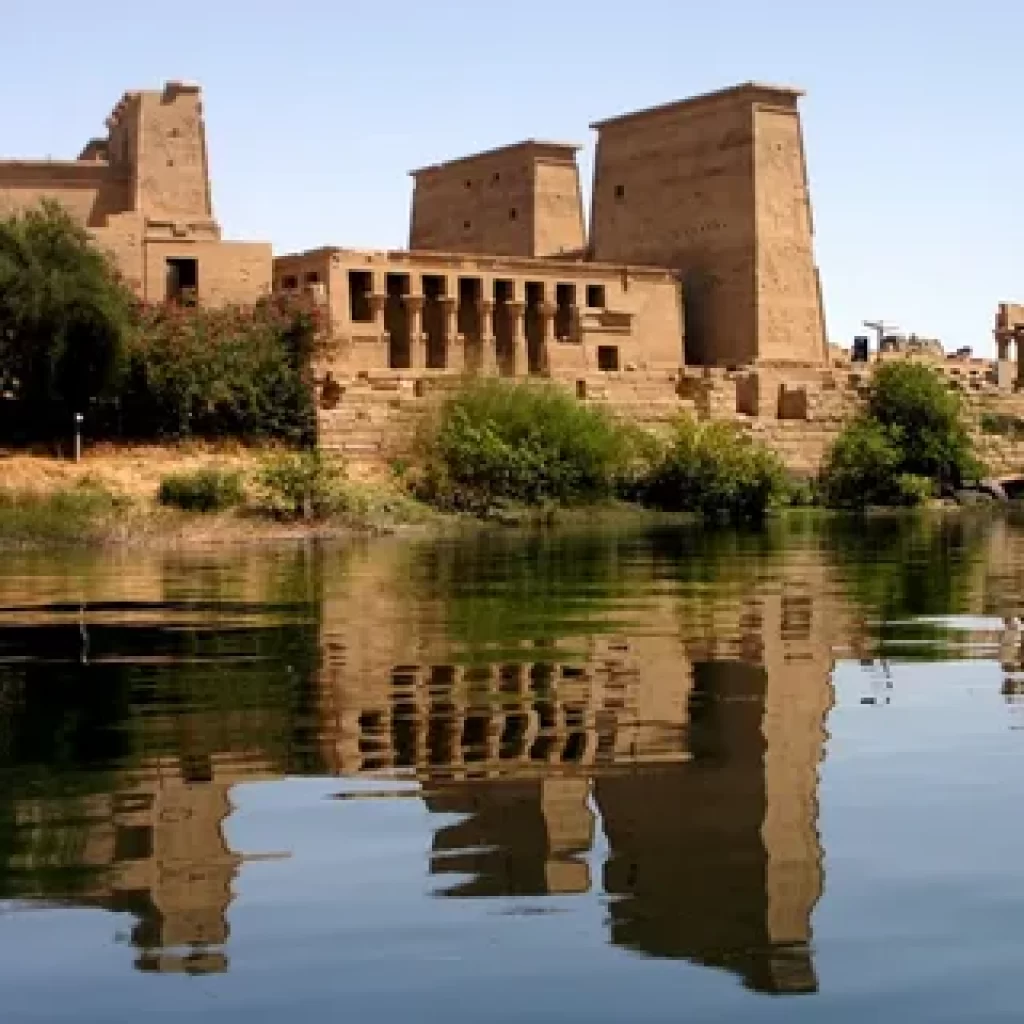
- Introduction
- The History of the Temple of Philae
- The Architectural Marvels of Philae
- The Religious Significance
- The Temple Complex
- The Relocation of Philae
- Philae in Mythology
- Modern Discoveries and Archaeology
- The Temple of Philae Today
- Conclusion
- FAQs
Introduction: of the Temple of Philae

The Temple of Philae, the most beautiful and best preserved ancient temples in Egypt today we’re going to take a virtual tour of this Ancient Temple and explore its rich history and magnificent architecture filet Temple is one of the most famous ancient Egyptian temples, and it is located on Angelica Island in the middle of the Nile River in Aswan this Temple was originally on Philly Island, but it was moved Stone by Stone in an international campaign to save The Monuments that were threatened
1. The History of the Temple of Philae
do you love Egyptian Antiquities do you want to visit one of the most beautiful temples in Nubia if your answer is yes then you need to know more about Filet Temple the temple that was dedicated to the Goddess Isis and that was moved from Philly Island to agilica Island because of the construction of the High Dam we will learn about the history and significance of Philly Temple, and we will see amazing shots of the temple and the island where it is located stay with us the Philly Temple is an ancient Egyptian temple complex located
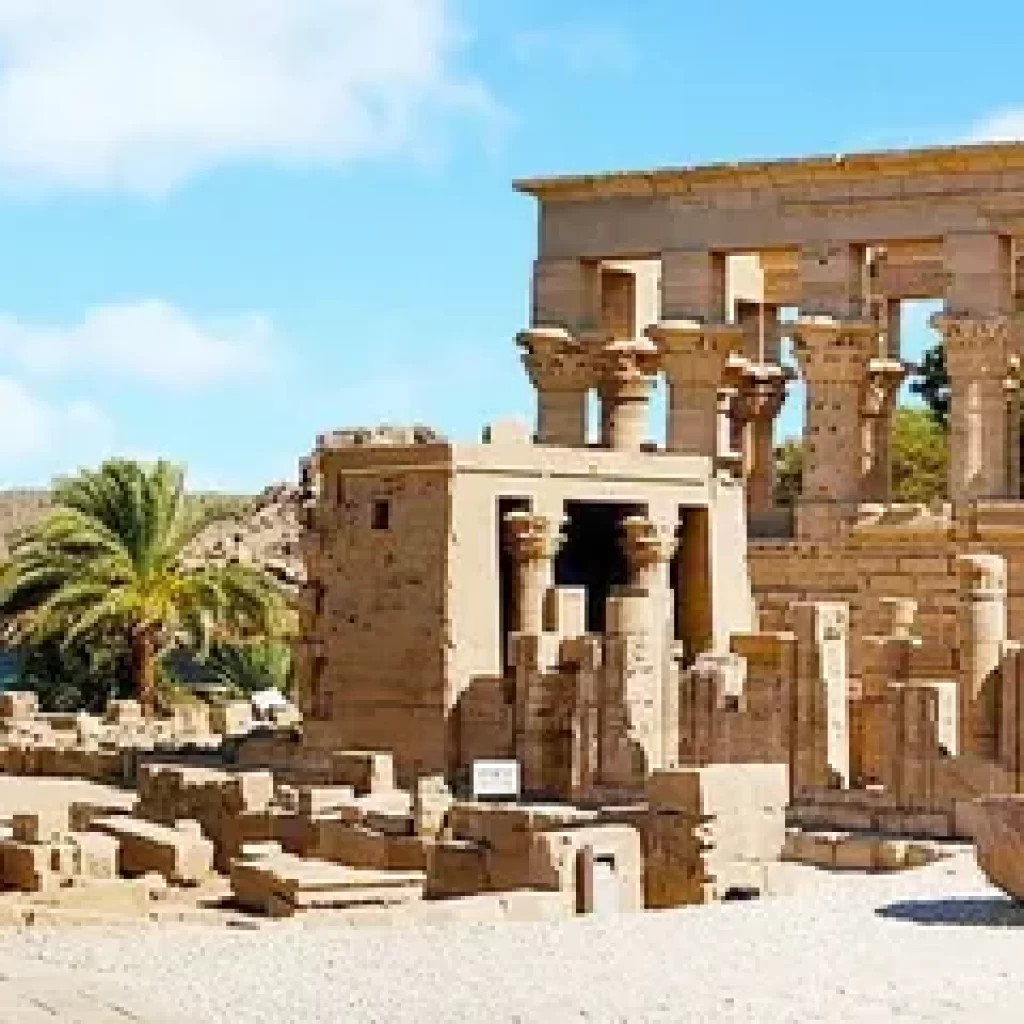
2. The Architectural Marvels of Philae
browning because of the construction of the High Dam in the 1960s Philly Temple includes many buildings pylons and inscriptions that represent the ancient Egyptian gods especially Isis who was considered the mother of Horus the Lord of kingship the Temple of Isis was the main temple on Philly Island, and it occupies a quarter of the Island’s area it was built in the Ptolemaic era, and it was completed and decorated in the Roman era
3. The Religious Significance
show bright colours and fine details the Temple of Hathor is a small Temple located next to the Temple of Isis, and it is dedicated to Augustus and decorated with inscriptions depicting the emperor offering sacrifices to Hathor and Isis the Trojan’s kiosk is a Roman tower located in front of Philly Temple, and it consists of four decorated columns supporting an open roof it was built by Emperor Trojan in the First Century A.D
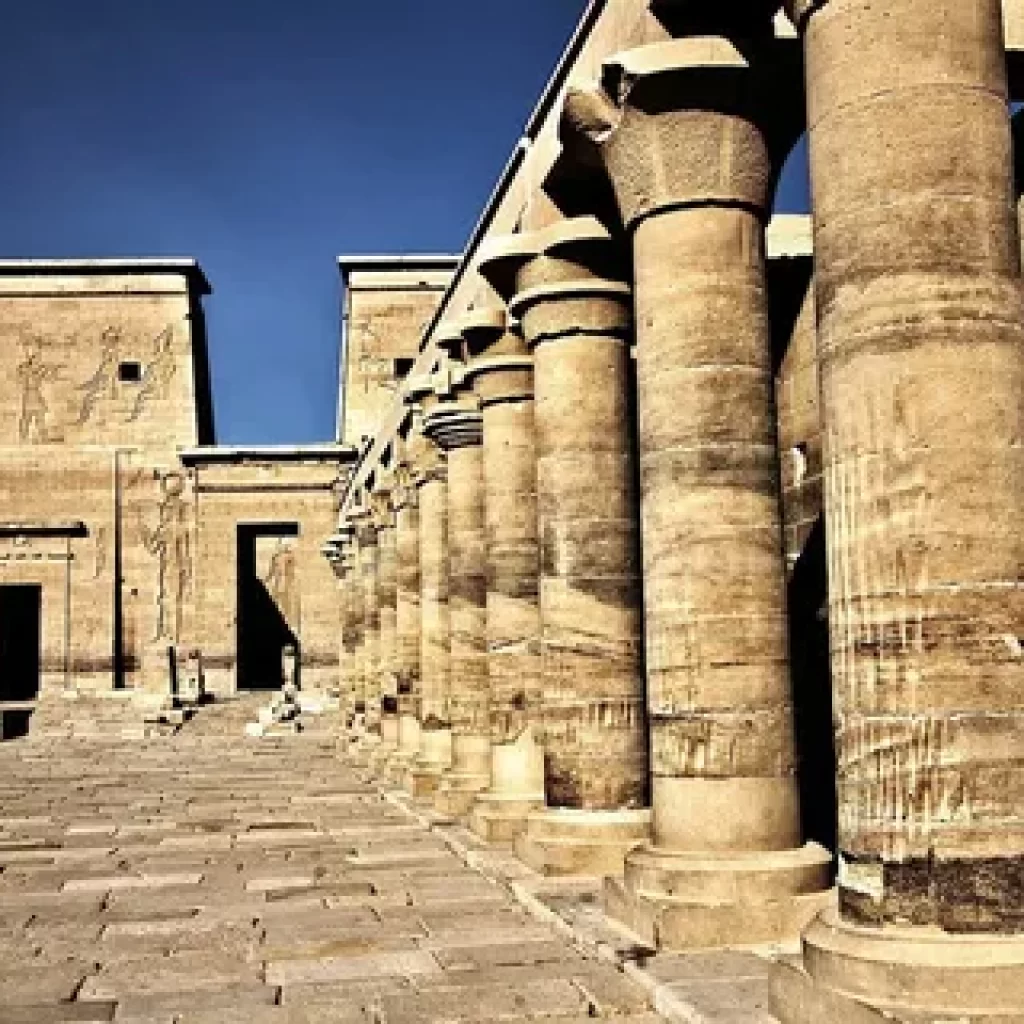
4. The Temple Complex
the Temple of Isis witnessed annual celebrations of the birth of Horus were
Isis appeared breastfeeding her son in a hall called mamis or House of Birth this place contained magnificent inscriptions depicting the story of Isis being impregnated by Osiris giving birth to Horus hiding him from set and Tohth raising him it also contained statues of Isis’s sister Naphthas and selkies Philly Temple also includes other temples for Gods such as Hathor Osiris and Amenhotep and pylons for Roman emperors such as Trajan and Augustus these buildings still preserve their beauty and charm as their inscriptions
5. The Relocation of Philae
In the 1960s, the construction of the Aswan High Dam posed a threat to the Temple of Philae, as the rising waters of Lake Nasser threatened to submerge the site. An international effort, coordinated by UNESCO, led to the meticulous relocation of the temple complex to the higher ground of Agilkia Island. This monumental task involved dismantling the structures stone by stone and reassembling them, preserving the temple’s historical integrity.
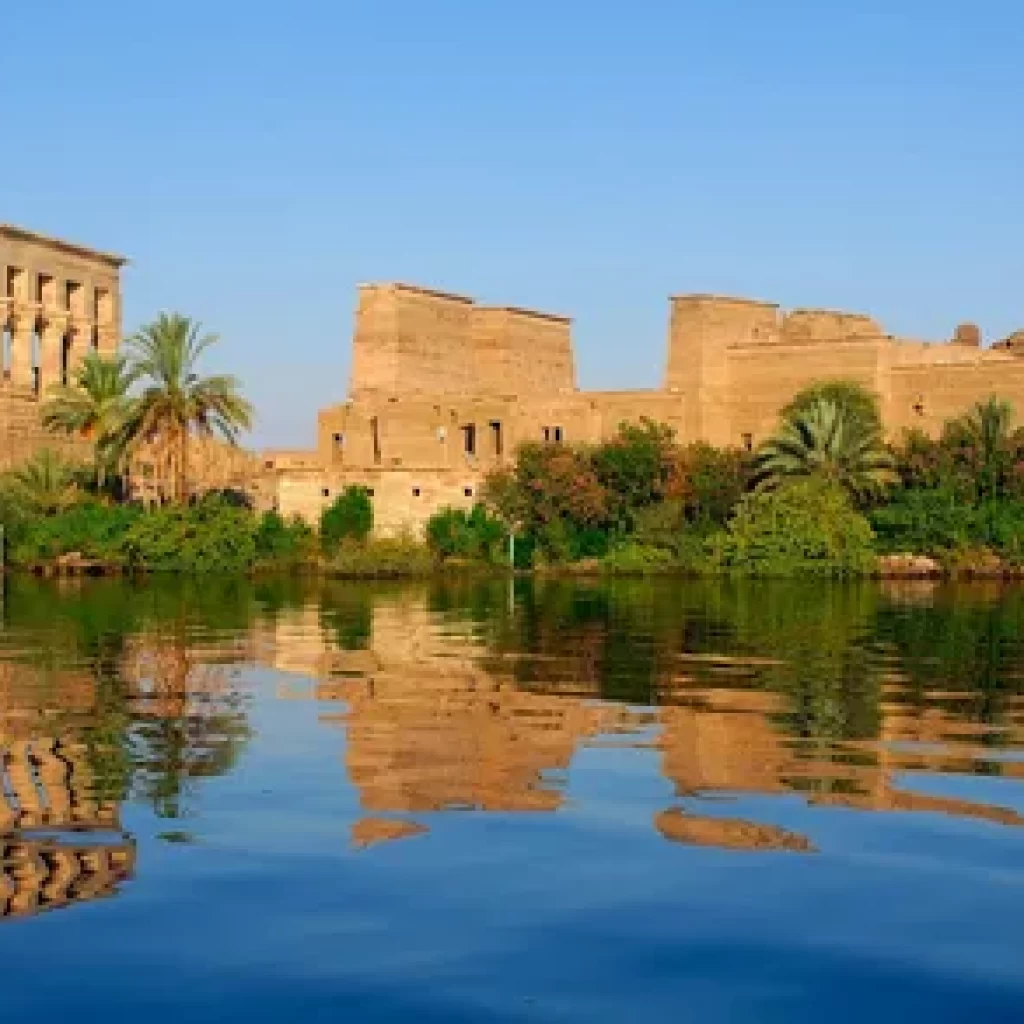
6. Philae in Mythology
Philae occupies a special place in Egyptian mythology, particularly in the myths surrounding Isis and Osiris. According to legend, Isis found the heart of her husband Osiris on the island, and it became a place of mourning and veneration. The temple’s reliefs and inscriptions often depict scenes from these myths, reinforcing its spiritual significance.
7. Modern Discoveries and Archaeology
Modern archaeological efforts at Philae have uncovered additional layers of its history, including insights into the temple’s usage during the Byzantine and early Christian periods. Archaeologists continue to study the site, revealing new aspects of its construction, religious practices, and historical transitions.
8. The Temple of Philae Today
Today, the Temple of Philae remains a major tourist attraction, drawing visitors from around the world who are eager The temple is also a venue for cultural events, such as the Sound and Light Show, which brings the history of Philae to life through dramatic storytelling and illumination.
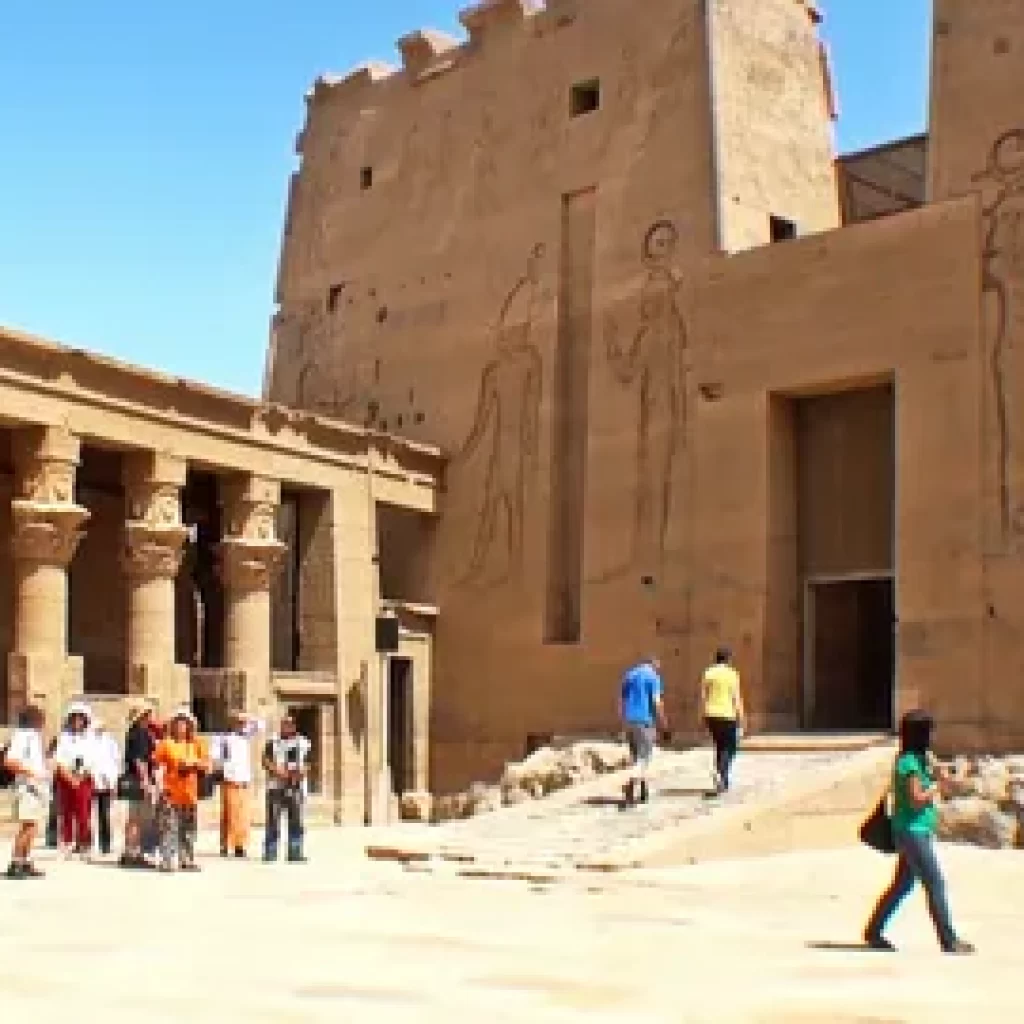
Conclusion: of the Temple of Philae
The Temple of Philae stands as a monumental symbol of ancient Egyptian religious devotion, architectural ingenuity, and cultural fusion. From its construction in the Ptolemaic period to its modern-day preservation, Philae has endured as a testament to the enduring power of human creativity and reverence for the divine. study and a beacon of historical heritage, the Temple of Philae invites us to reflect on the profound connections between history, mythology, and the timeless quest for spiritual connection.
FAQs: of the Temple of Philae
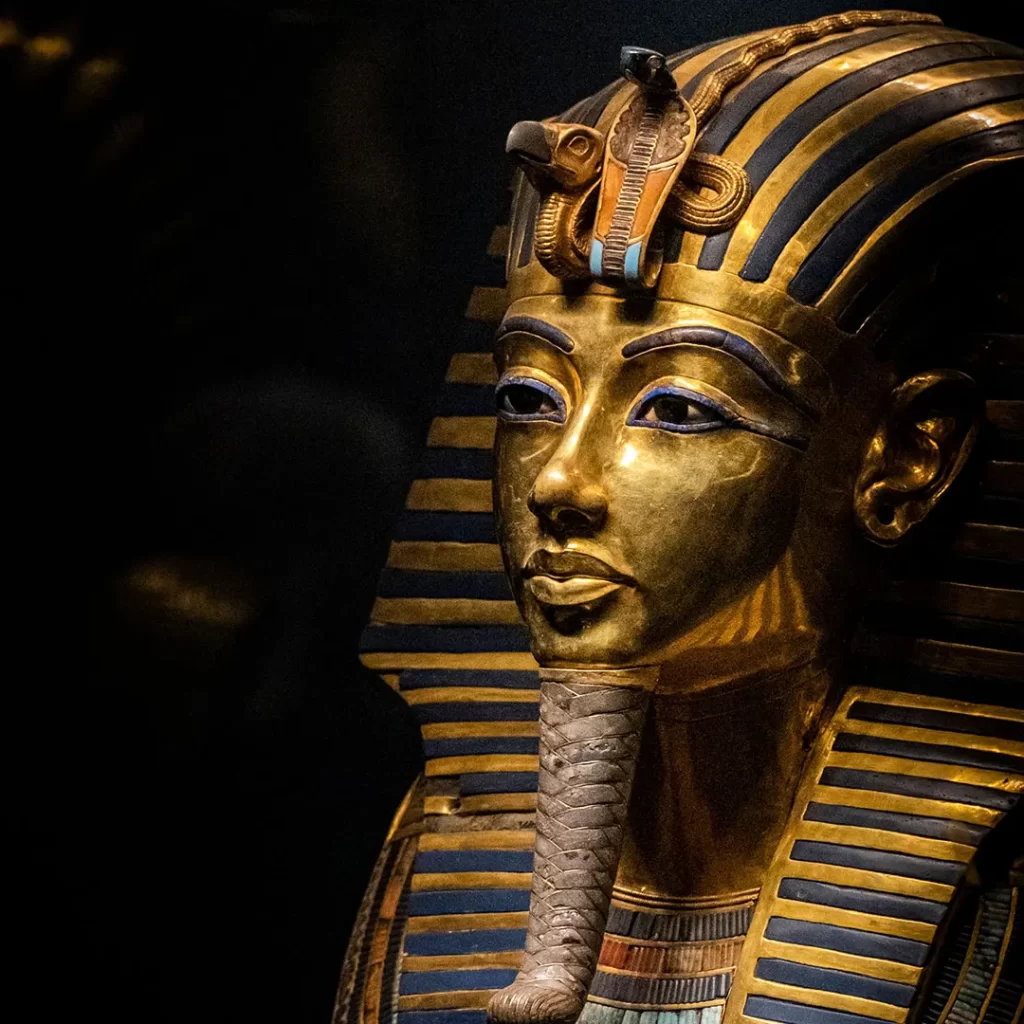
1. What is the Temple of Philae?
The Temple of Philae is an ancient temple complex in Egypt, primarily dedicated to the goddess Isis.
2. Where is the Temple of Philae located?
Originally located on Philae Island, it was relocated to Agilkia Island near Aswan due to the construction of the Aswan High Dam.
3. Who built the Temple of Philae?
The temple was constructed during the Ptolemaic Dynasty and continued to be used and expanded during the Roman period.
4. Why was the Temple of Philae relocated?
The temple was relocated to prevent it from being submerged by the waters of Lake Nasser following the construction of the Aswan High Dam.
5. What is the religious significance of the Temple of Philae?
It was a major centre for the worship of the goddess Isis and other deities, serving as a pilgrimage site for devotees.
6. What are some notable structures in the Temple of Philae complex?
Notable structures include the Temple of Isis, the Temple of Hathor, and Trajan’s Kiosk.
7. How can I visit the Temple of Philae?
The Temple of Philae is accessible by boat from Aswan, and it is a popular tourist destination with guided tours available.

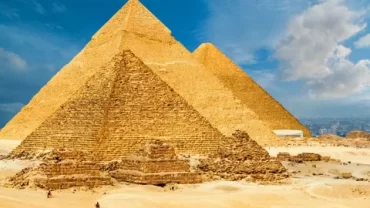



Comment (0)